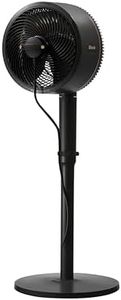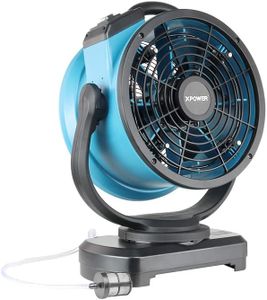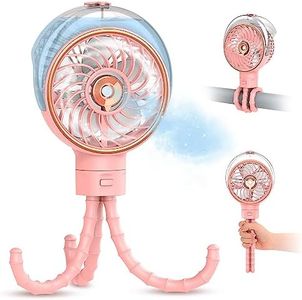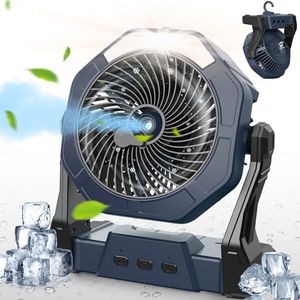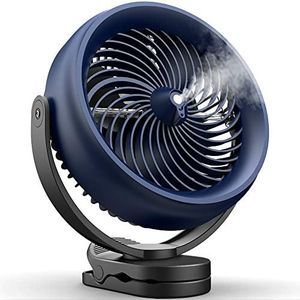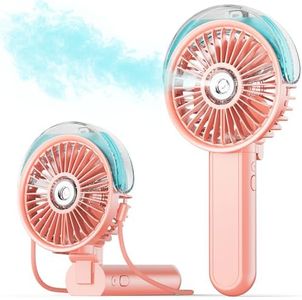We Use CookiesWe use cookies to enhance the security, performance,
functionality and for analytical and promotional activities. By continuing to browse this site you
are agreeing to our privacy policy
10 Best Outdoor Misting Fans
From leading brands and best sellers available on the web.Buying Guide for the Best Outdoor Misting Fans
Choosing an outdoor misting fan is all about balancing your need for cooling with factors such as the climate in your area, where and how you plan to use the fan, and how much flexibility or power you need. Rather than picking the first fan you see, it’s useful to understand what features really matter. By learning a bit about key specs, you can zero in on the model that will keep you the most comfortable outdoors, whether it’s for your patio, backyard, or a larger event space.Fan Size and Coverage AreaFan size refers to the diameter of the fan blades, often measured in inches. This size directly affects how much area the fan can cool. Smaller fans (less than 18 inches) are best for personal use or small patios, while mid-sized fans (18 to 24 inches) work for medium spaces like decks or outdoor dining areas. Larger fans (over 24 inches) can cool big patios or even outdoor events. Consider the size of your space—pick a size where the airflow and mist can reach everyone you want to keep cool, but not so large that it creates unnecessary wind.
Misting Power and Adjustable SettingsThis spec covers both the amount of mist the fan can produce and how you can adjust it. Some fans have simple on/off misting, while others offer variable settings for mist output or fan speed. Low misting is good for humid areas or close-up use, while high misting is ideal for dry climates or when you need to cool a wider area. Adjustable mist and fan speed let you adapt to changing weather or personal comfort. If you want more control over your comfort, look for models with more settings.
Water Supply and ConnectionOutdoor misting fans use water either from a built-in reservoir or by connecting to a garden hose. Reservoir models are more portable but need to be refilled—it suits smaller gatherings or occasional use. Hose-connection fans can run continuously but require a nearby water source. If you need a fan that can run for hours without interruption, and you have access to a water hose, that option is best. If mobility or placement freedom is more important, a reservoir-based fan is the way to go.
Portability and Mounting OptionsPortability describes how easy it is to move the fan. Some fans come with wheels or handles for easy relocation, while others are designed to be mounted on walls or set in one spot. Freestanding models with wheels are great if you want flexibility to move the fan around your yard or outdoor event. Wall-mounted or stationary fans work better for permanent setups like patios or gazebos. Choose portability based on whether you’ll want to reposition your fan to cover different areas.
Weather ResistanceSince outdoor misting fans operate outside, they need to be built to withstand sun, moisture, and sometimes wind. Look for fans with components made from rust-resistant materials, waterproof motors, and UV protection. Higher weather resistance is crucial if the fan will stay outside most of the time, while lower resistance is fine if you’ll mostly bring it inside after use. Think about the local weather and how you plan to store the fan.
Noise LevelWhile most misting fans make some noise, the amount varies. Quieter models are better for outdoor dining, conversations, or relaxing spaces, while louder fans might be suitable for parties or large gatherings where the noise won’t be noticed. If ambient sound matters to you or your neighbors, look for fans known for quiet operation and avoid those with high decibel ratings.
